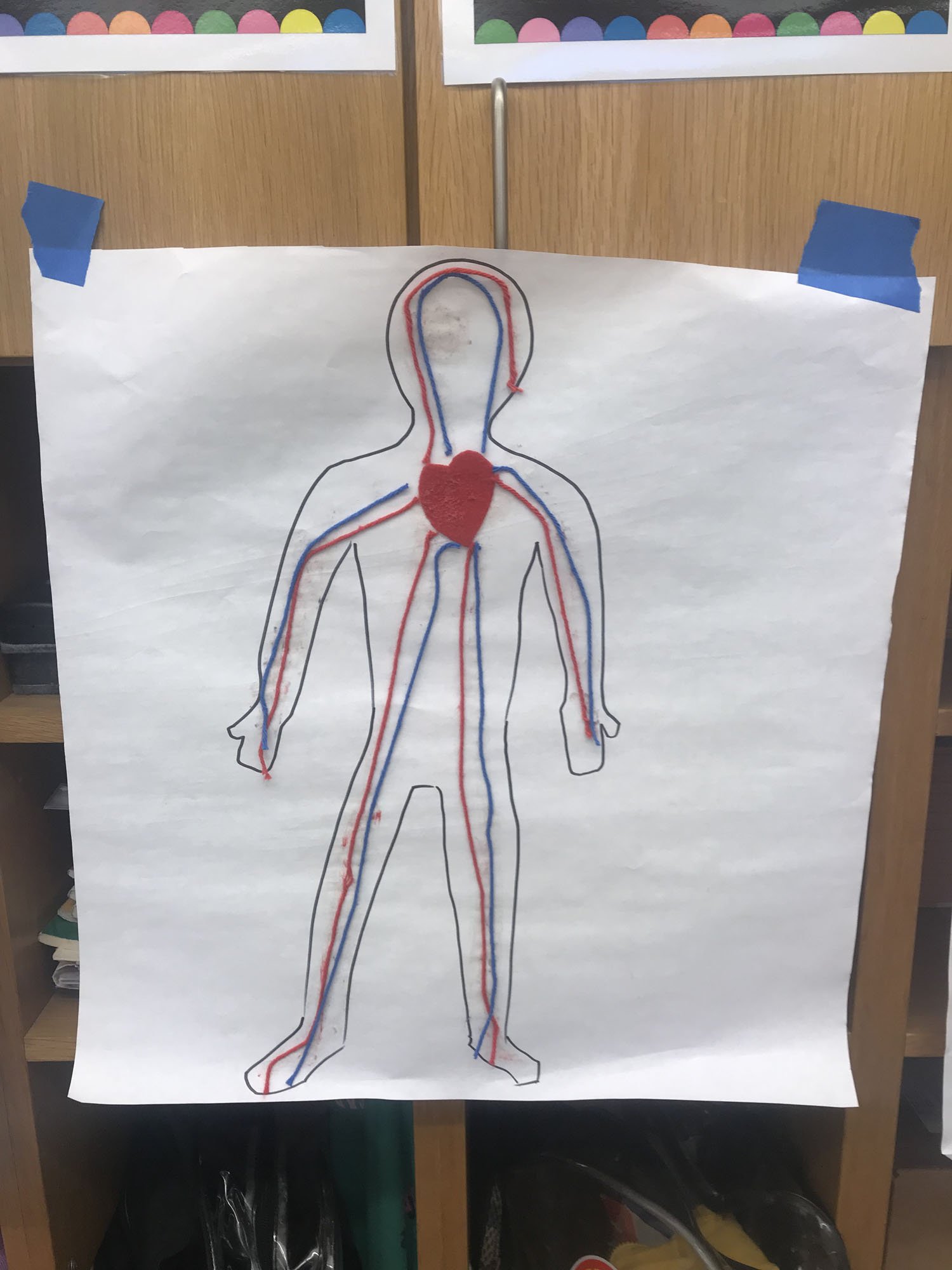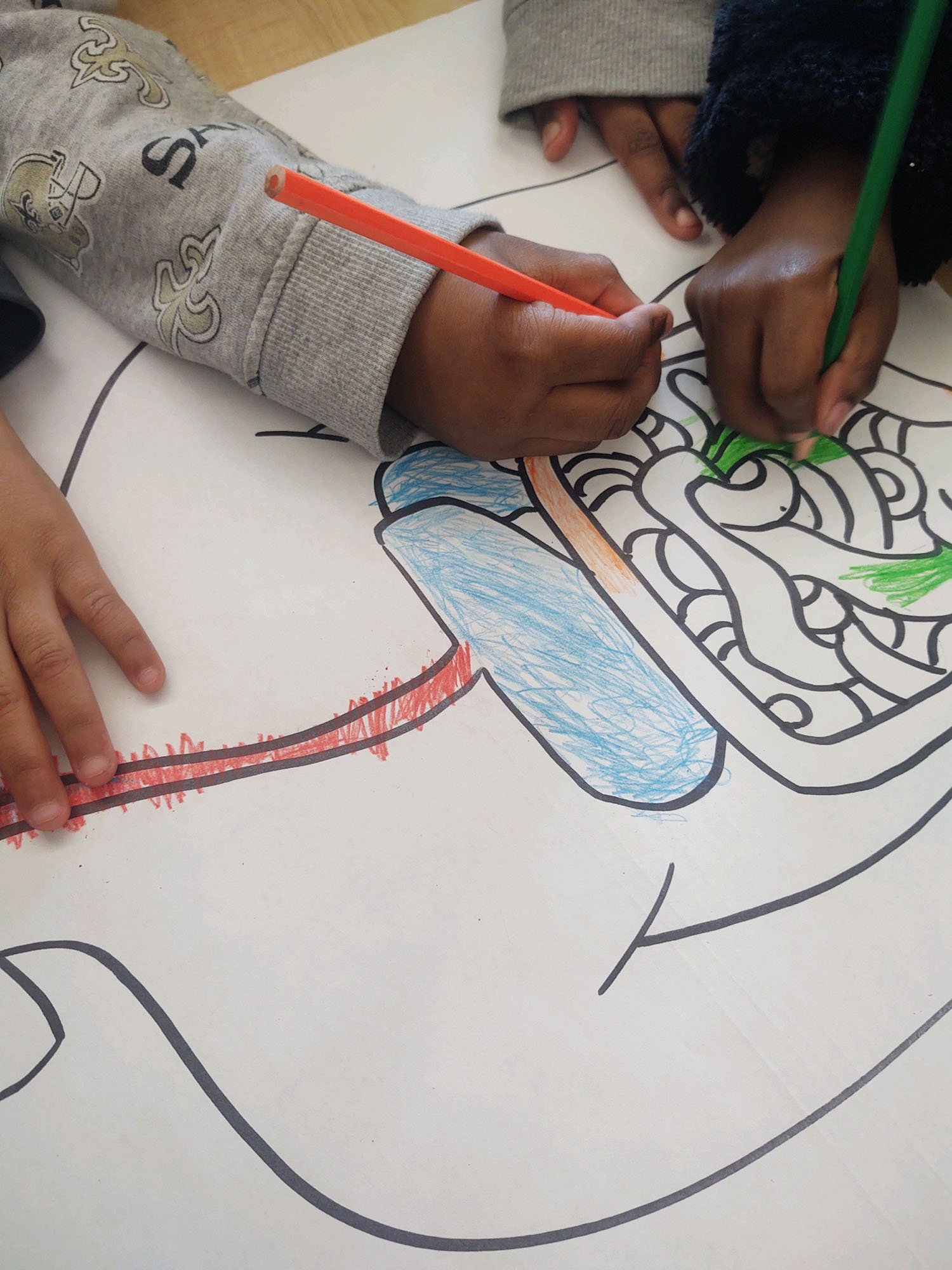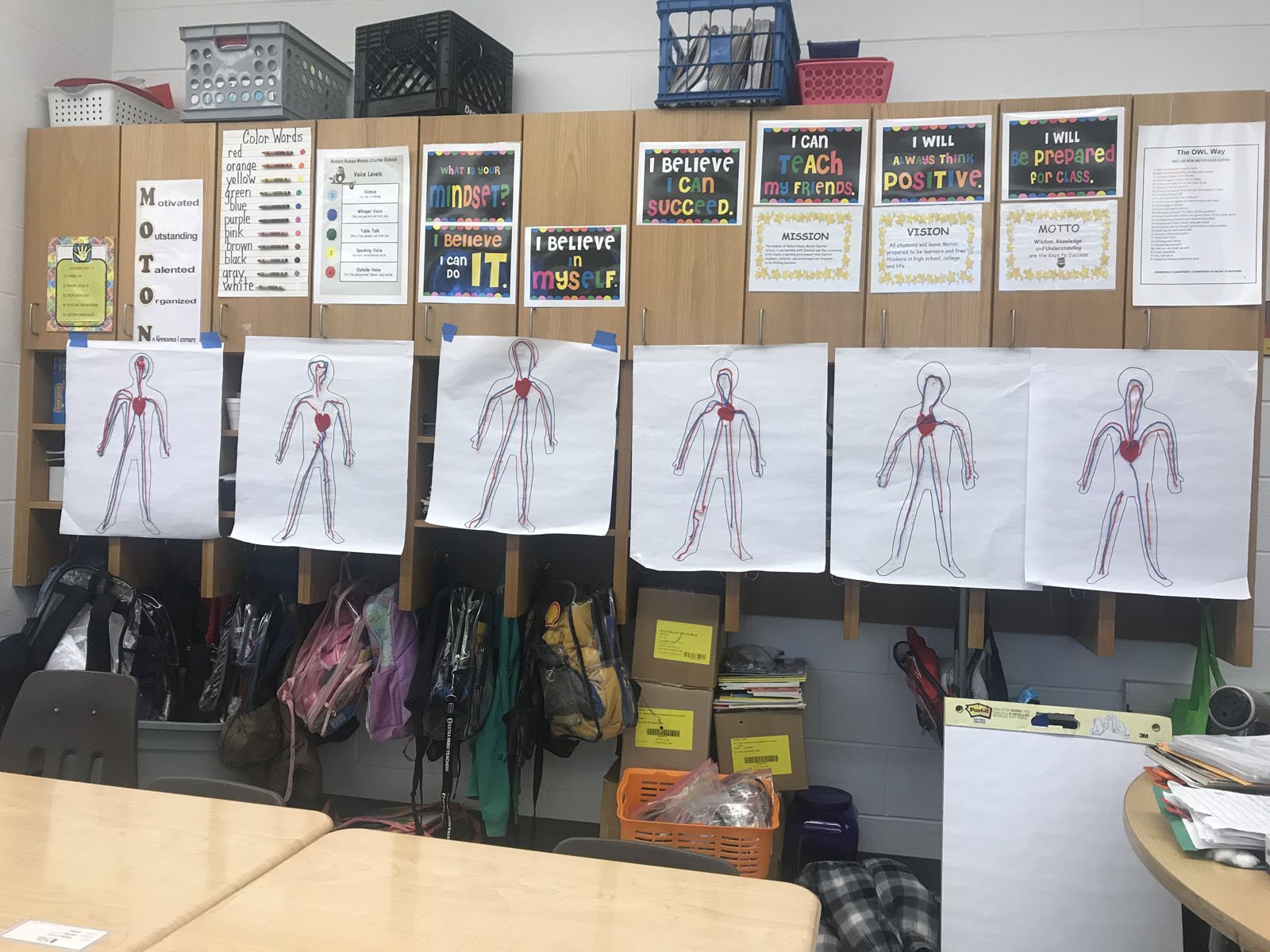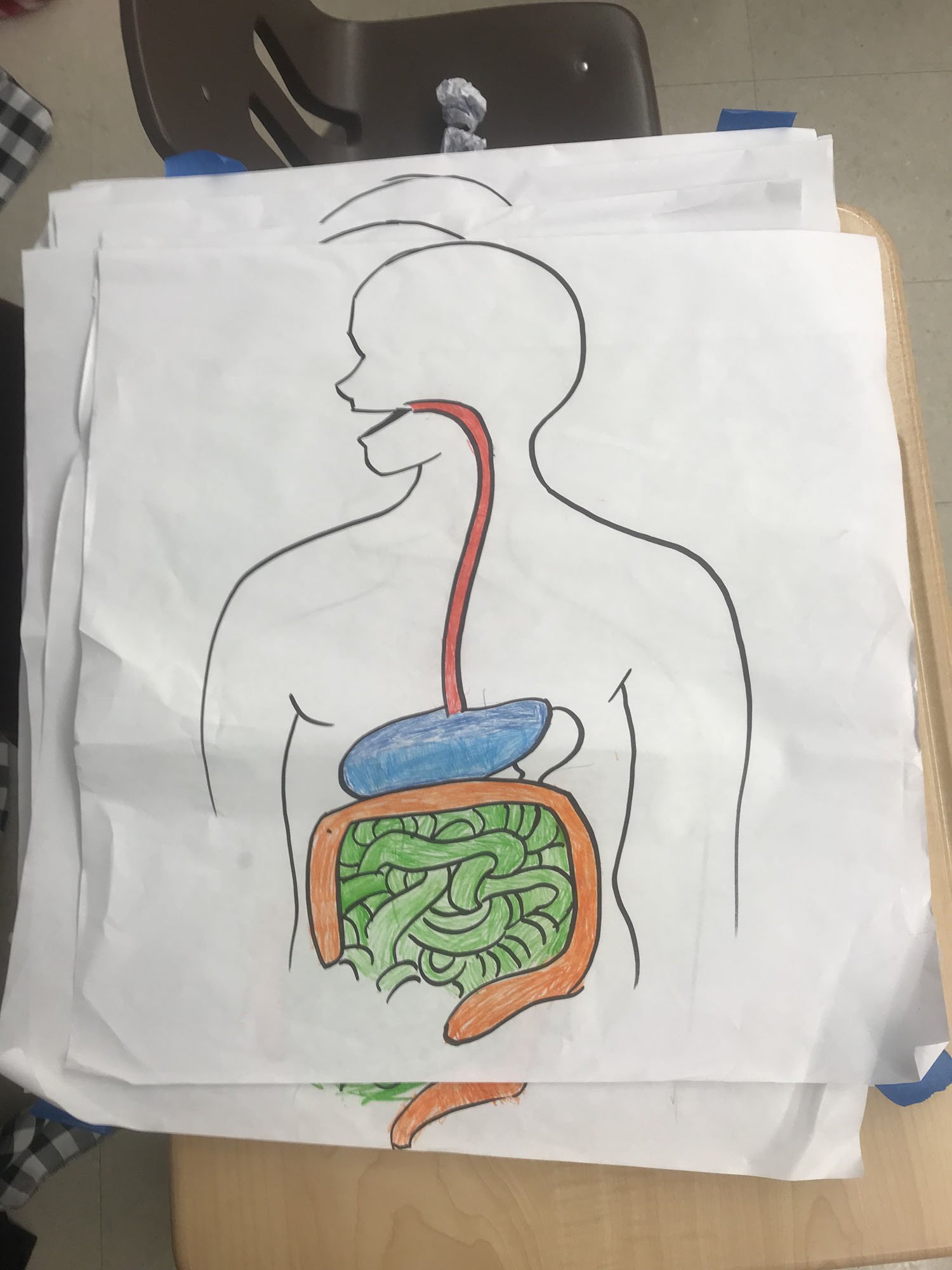The Systems that Make Us: Integrating Art into Science
In Mrs. Auzout’s first grade class, we learned about the several systems of the human body that allow us to function: the skeletal system, Muscular system, Digestive system, Circulatory system, and Nervous system.
These lessons were presented to the students over the course of two months, during which we implemented varying methods of Arts-Integration into Mrs. Auzout’s lesson plan. Last year, I had the pleasure of co- teaching the same unit with Mrs. Auzout. This year, we’re more than prepared for the challenge of teaching how our highly complex bodies work at a first-grade level.
While teaching these bodily systems, we worked both individually and in groups. For the Skeletal and Muscular systems, we warmed up with stretches as a group. Then we did follow-along pencil drawings of the bones and muscles individually. When teaching the Digestive and Circulatory systems, we reviewed the previous systems individually then colored/collaged the systems in groups. Working individually strengthened the students’ ability to retain the knowledge of the body systems, while working in groups strengthened social-emotional learning (SEL) skills.
By the time we got to the Nervous system, students were far from nervous! Students worked individually to color diagrams of the human brain. They were then able to recall the previous body parts that help the brain function and called upon the various creative and social emotional skills they learned along the way through Arts-Integration!





